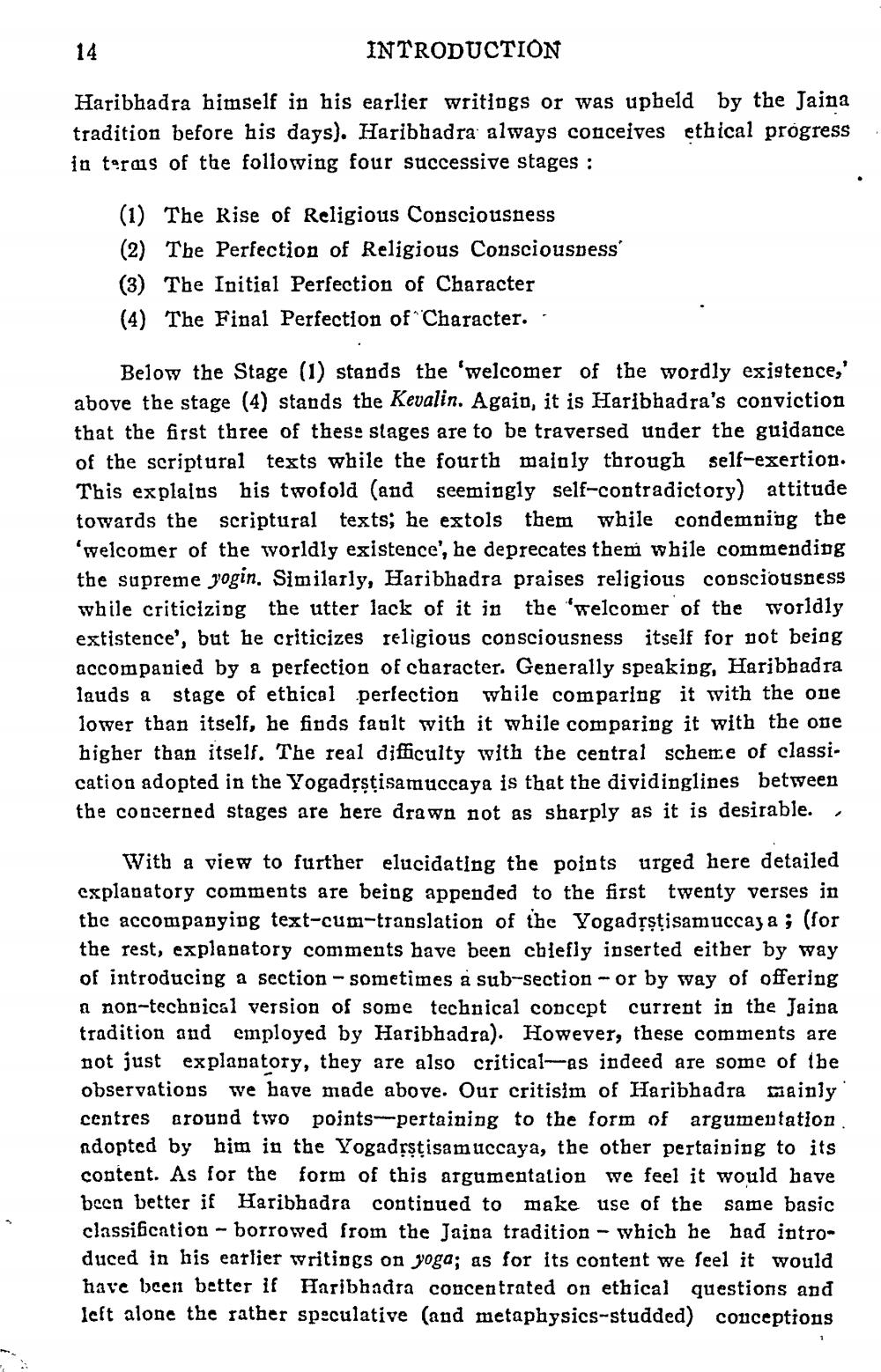________________
14
INTRODUCTION
Haribhadra himself in his earlier writlogs or was upheld by the Jaina tradition before his days). Haribhadra always conceives ethical progressi in teras of the following four successive stages :
(1) The Rise of Religious Consciousness (2) The Perfection of Religious Consciousness (3) The Initial Perfection of Character (4) The Final Perfection of Character.
Below the Stage (1) stands the 'welcomer of the wordly existence,' above the stage (4) stands the Kevalin. Again, it is Haribhadra's conviction that the first three of these slages are to be traversed under the guidance of the scriptural texts while the fourth malply through self-exertion. This explalos his twofold (and seemingly self-contradictory) attitude towards the scriptural texts; he extols them while condemning the 'welcomer of the worldly existence', he deprecates them while commending the supreme yogin. Similarly, Haribhadra praises religious consciousness while criticizing the utter lack of it in the 'welcomer of the worldly estistence', but he criticizes religious consciousness itself for not beiog accompanied by a perfection of character. Generally speaking, Haribbadra lauds a stage of ethical perfection while comparing it with the one lower than itself, he finds fault with it while comparing it with the one
than itself. The real difficulty with the central scheme of classication adopted in the Yogadrstisamuccaya is that the dividinglines between the concerned stages are here drawn not as sharply as it is desirable..
With a view to further elucidating the points urged here detailed cxplanatory comments are being appended to the first twenty verses in the accompanying text-cum-translation of the Yogadrstisamuccaya ; (for the rest, explanatory comments have been chiefly inserted either by way of introducing a section - sometimes a sub-section - or by way of offering a non-technical version of some technical concept current in the Jaina tradition and employed by Haribhadra). However, these comments are not just explanatory, they are also critical-as indeed are some of tbe observations we have made above. Our critisim of Haribhadra mainly centres around two points-pertaining to the form of argumentation adopted by him in the Yogadrstisam uccaya, the other pertaining to its content. As for the form of this argumentation we feel it would have been better if Haribhadra continued to make use of the same basic classification - borrowed from the Jaina tradition - which he had introduced in his earlier writings on yoga; as for its content we feel it would have been better if Haribhadra concentrated on ethical questions and Icft alone the rather speculative and metaphysics-studded) conceptions




